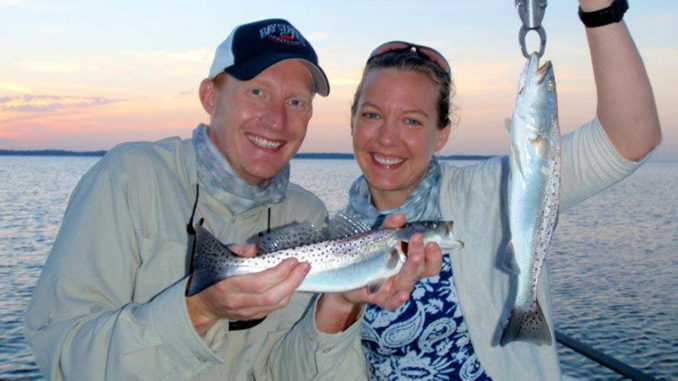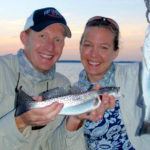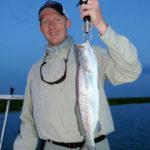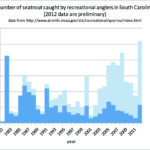
This year promises to be great, but take care
Back-to-back winter kills on spotted seatrout in 2009 and 2010 decimated the population and left anglers who love catching specks wondering when the fishery would once again be viable. Thankfully, the S.C. Department of Natural Resources monitors things closely and did not hesitate to take steps to help the fishery rebound. Looking at the numbers, 2013 should be a great year, with the population possibly at a 10-year high.
In 2011, after the second winter kill, the SCDNR asked anglers to participate in a voluntary moratorium on seatrout harvest during spawning season in hopes of increasing the population. What impact did the moratorium have? It’s difficult to measure the extent, but the rebound since that time has been a rapid one, and according to Dr. Steve Arnott of the SCDNR, the catch rate in 2012 increased and was just above the 10-year average.
“The seatrout we see in the trammel-net survey are aged one year or older, so the 2012 survey numbers are made up of fish born during 2011, mostly,” he said.
In 2012, many anglers experienced good catches, much better than expected — at least in terms of numbers — but many of those fish were just under the legal length of 14 inches with which the SCDNR has managed specks — along with a 10-fish daily creel limit — since 2007. For anglers who found a steady supply of 12- to 13-inch specks last year, there is really good news for 2013.
“(The) 12-inch fish from last year will be in the 13- to 15-inch range this year,” Arnott said. “Some will be a lot bigger, some smaller.”
In other words, anglers who discovered hot spots producing tons of fish just under the size minimum last year should find much better fish in those same spots this year.
Does this information mean fishermen should harvest as many as possible? The answer is equivocally no. More anglers are targeting seatrout now than ever before, and that number is expected to increase, so conservation is very important to maintain a great fishery. Thankfully, while the number of fish caught has increased, the number of fish actually harvested has decreased, due in part to a change in regulations regarding sizes and numbers, and in part to a shift in angler practices over the past several years. But catch-and-release alone is not enough.
“We know that a proportion of fish caught and released alive actually end up dying, and this inadvertent mortality can, in itself, be problematic for the seatrout population if a very large number of fish are being caught and released,” said Arnott, who recommends that fishermen help reduce mortality by doing everything possible to make sure released fish are in good shape.
“Treat them gently, don’t overplay them, and keep them out of the water for as short of a time as possible,” he said.
Information on the proper way to release fish alive can be found on the SCDNR website at www.dnr.sc.gov/marine/tagfish/pdf/catchandreleasebrochure.pdf.
No doubt about it, trout fishermen this year are in for some of the best fishing in years, but it is never a bad idea to think ahead. We cannot control nature — and who knows what the next winter will hold — but we can control our own actions. Now is the time to think about the future of seatrout in South Carolina and what the possibilities can be, especially if the upcoming winter is as mild as the last one.
This is set to be a great year for numbers of legal-size seatrout, but 2014 and years to follow could be the years we have both size and numbers. All we have to do is think about how we handle these fish and how many we really need to take back home with, and the reward of a stellar seatrout fishery will surely follow.






Be the first to comment